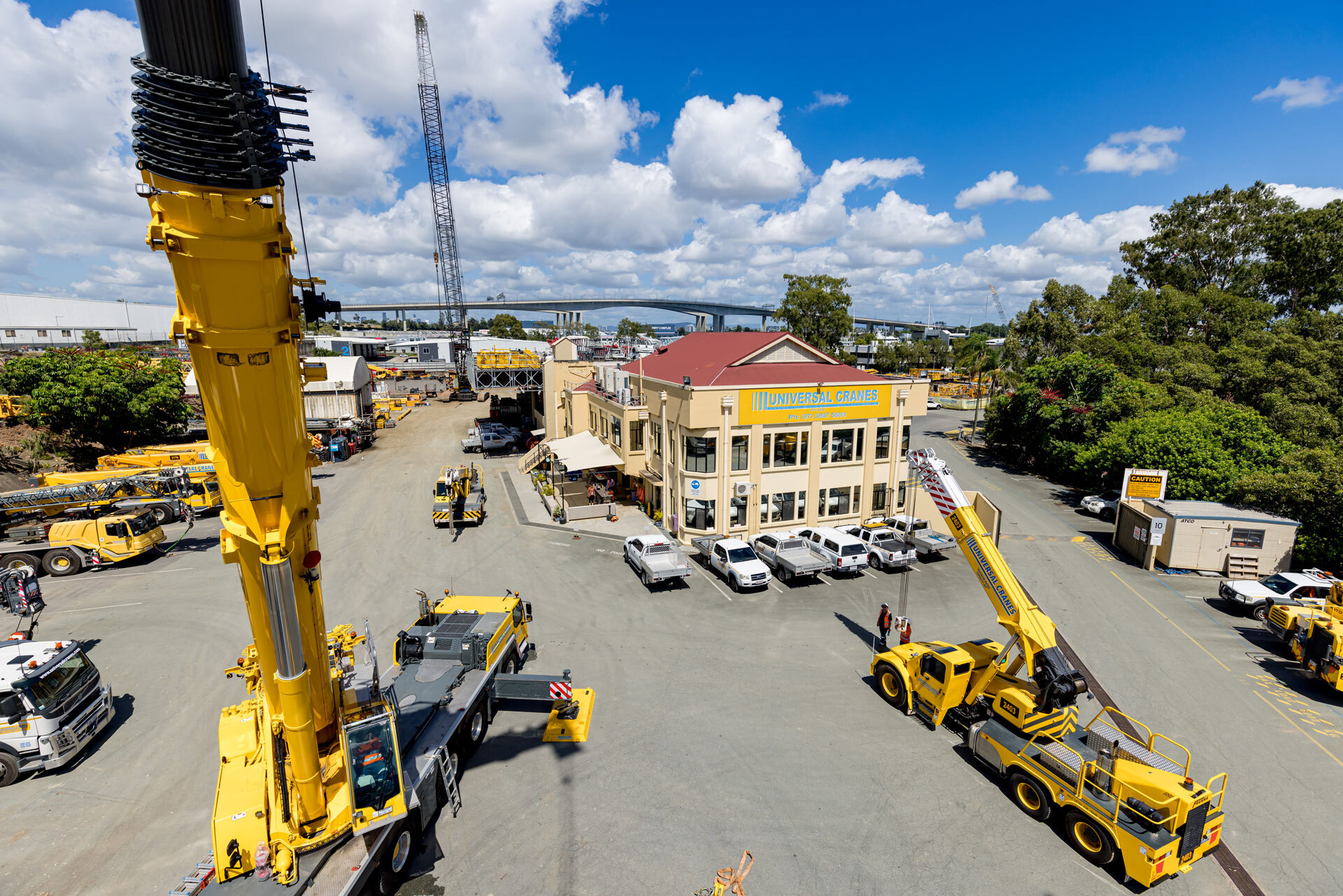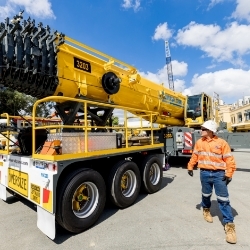The 55T Tadano GT-550E is a robust heavy lift crane with an array of ideal usage cases across construction and industrial sectors. This crane shines in tasks demanding a combination of substantial lifting capacity, mobility, and precision. It’s well-suited for various applications, including the erection of steel structures, positioning heavy industrial equipment, and handling oversized materials. The GT-550E is particularly valuable in construction projects where space may be limited, thanks to its compact design and versatility. Whether it’s a large-scale construction site or a demanding industrial operation, this crane proves its mettle by offering efficiency, reliability, and a remarkable lifting capacity.
The Tadano GT-550E offers a broad range of functionality, driven by its advanced engineering and design. Equipped with a powerful engine, sophisticated control systems, and an extendable telescopic boom, this crane can be configured for a wide array of lifting tasks. Its adaptability makes it an invaluable asset for operators who need to hoist heavy machinery or handle oversized components with precision and ease. The crane also features safety enhancements such as load moment indicators and anti-two-block systems, ensuring the well-being of both the operator and the work environment. Whether it’s executing critical lifts on a construction site or providing precise handling in an industrial facility, the GT-550E is a versatile workhorse.
Operating the Tadano GT-550E in Australia involves adhering to the nation’s stringent safety regulations and crane operation standards. It’s essential that operators are certified, well-trained, and experienced in handling the crane to ensure safe and efficient operation. Routine inspections and maintenance are a must to maintain the crane’s reliability and safety. Compliance with local and national safety standards is crucial to minimize risks and safeguard the health of all personnel involved in the project. Operating this crane in Australia necessitates a deep understanding of the specific regulatory requirements and safety protocols relevant to the region, underscoring the paramount importance of safety in every lifting operation.

